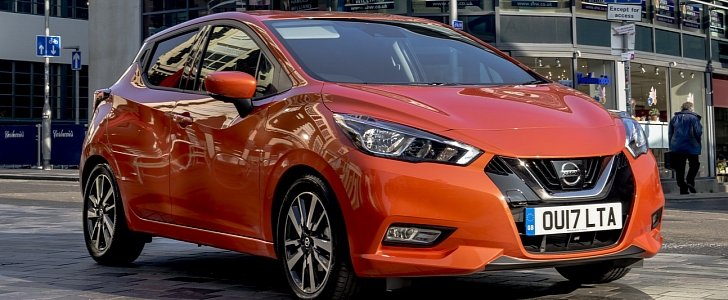The all-new Nissan Micra has just received the kind of engine we don't like: a non-turbo, 1.0-liter, 3-cylinder. It's just been announced in Britain and is rated at 70bhp/71 PS.
The powertrain is the same as on other modes... a lot of other models. Most smart cars have the 1.0-liter at the back, installed at an angle under the trunk floor. Renault also offers it on the Clio and various Dacia models.
We've tested it too, and while it's fun to wring out its neck, the 1.0-liter isn't the engine we'd pick in any small car. Still, it's not like Nissan is alone in offering such a powertrain. For example, the Fiesta has a non-EcoBoost 1.0L in the Fiesta, so does Volkswagen, Skoda and especially the French.
Despite what you might think, the new Micra is not based on the Renault Clio's CMF architecture, but on a revised version of the old Micra. Nissan is expecting the 1.0-liter engine will account for about 15% of total sales in Britain, where it just went on sale.
The new 1.0-liter 71PS engine joins the 0.9-liter 90PS three-cylinder turbo gasoline engine and the 1.5-liter 90PS four-cylinder diesel, which went on sale earlier this year.
We think you'd be better off buying a better equipped Dacia for the money. The Micra makes some pretty severe downgrades for the sake of theoretical fuel consumption. For example, the 0 to 62 mph sprint is dealt with in 15.1 seconds, and the top speed is 100 (161 km/h).
We'd like to point out that the old Micra with a base 1.2-liter engine was more powerful, faster and emitted only 10 grams of CO2 more. We didn't like that one either, though.
We've tested it too, and while it's fun to wring out its neck, the 1.0-liter isn't the engine we'd pick in any small car. Still, it's not like Nissan is alone in offering such a powertrain. For example, the Fiesta has a non-EcoBoost 1.0L in the Fiesta, so does Volkswagen, Skoda and especially the French.
Despite what you might think, the new Micra is not based on the Renault Clio's CMF architecture, but on a revised version of the old Micra. Nissan is expecting the 1.0-liter engine will account for about 15% of total sales in Britain, where it just went on sale.
The downgrade
On paper at least, it's economical, with a claimed 61.4 mpg UK and CO2 emissions of 103 grams per kilometer. But it will still set you back £11,995 for the Visia. This base trim level includes 15-inch steel wheels, LED signature lights, electric adjusting mirrors, only two speakers and auto emergency braking. Yes, you are missing out on air conditioning and electric windows.The new 1.0-liter 71PS engine joins the 0.9-liter 90PS three-cylinder turbo gasoline engine and the 1.5-liter 90PS four-cylinder diesel, which went on sale earlier this year.
We think you'd be better off buying a better equipped Dacia for the money. The Micra makes some pretty severe downgrades for the sake of theoretical fuel consumption. For example, the 0 to 62 mph sprint is dealt with in 15.1 seconds, and the top speed is 100 (161 km/h).
We'd like to point out that the old Micra with a base 1.2-liter engine was more powerful, faster and emitted only 10 grams of CO2 more. We didn't like that one either, though.









